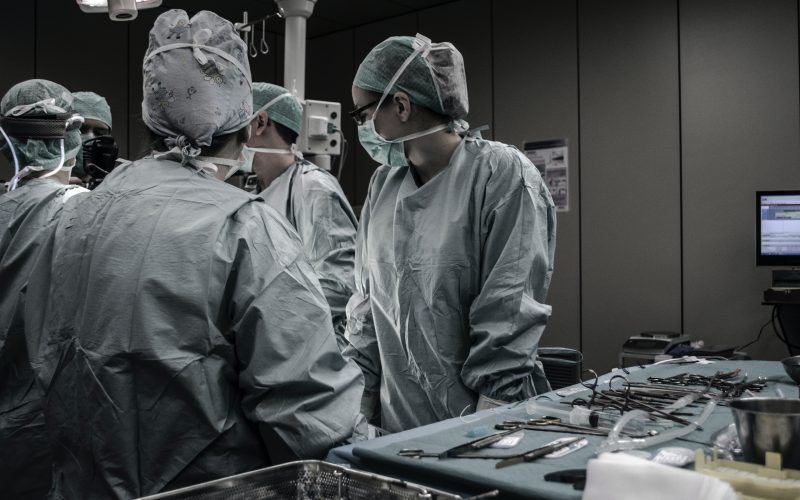The evolution of technology has brought about incredible advancements in the medical industry, but it’s also raised some questions: Is there a place for doctors alongside robots and automation? Can we maintain the delicate balance between cutting-edge technology and humane patient care? In this blog post, we’ll explore how doctors can navigate these challenges and continue to provide critical healthcare services while embracing emerging technologies. From telemedicine to AI-assisted diagnoses, let’s dive into the role of doctors in the age of automation!
The changing role of doctors in the age of automation
As technology advances, the role of doctors is changing. With the advent of automation, many tasks that were once performed by doctors are now being handled by machines. This includes everything from routine blood tests to more complex procedures like surgeries.
While this change can be seen as a positive one overall, it does come with some challenges. For example, as more tasks are automated, doctors may find themselves with less to do. This could lead to boredom or even burnout. Additionally, as machines become more sophisticated, there is a risk that human error will be introduced into the equation.
To combat these challenges, it is important for doctors to focus on the areas where they can add the most value. This includes things like providing emotional support to patients and their families, offering personalized care plans, and staying up-to-date on the latest medical breakthroughs. By doing so, they can ensure that they remain an essential part of the healthcare team – even in an age of automation.
How technology is changing patient care
Over the past few decades, technology has drastically changed the way we live and work. We can now communicate with anyone in the world instantly, find out almost anything with a few clicks, and even hail a ride without having to lift a finger. It’s no surprise, then, that technology is also changing the way we receive healthcare.
From wearables that track our vital signs to treatments that are personalized to our DNA, technology is transforming patient care. And while these changes bring many benefits, they also pose some challenges for doctors who must learn to use new tools and balance them with the personal touch that patients need.
Some of the ways technology is changing patient care include:
-Wearables: Patients can now use devices such as fitness trackers and smartwatches to track their health data and share it with their doctor. This gives doctors a more complete picture of their patients’ health and allows them to catch problems early.
– Telemedicine: Thanks to advances in telecommunications, patients can now consult with doctors remotely using video chat or phone calls. This is particularly useful for people who live in rural areas or who have difficulty getting to a doctor’s office.
– Electronic health records: Doctors can now keep all of their patients’ medical records in one electronic system. This makes it easier to access information and helps ensure that nothing is missed when a patient is seen by multiple doctors.
– Personalized medicine: With advances
The balance between technology and patient care
Technology is becoming increasingly prevalent in the medical field. From electronic health records to artificial intelligence, doctors are increasingly relying on technology to help them provide better care for their patients. However, there is a balance that must be struck between using technology and providing personal care to patients.
On the one hand, technology can help doctors save time and be more efficient. For example, electronic health records can help doctors quickly access a patient’s medical history and make informed decisions about their care. Similarly, artificial intelligence can be used to quickly diagnose diseases and recommend treatment options.
On the other hand, some aspects of patient care require a personal touch that cannot be provided by technology. For example, building a relationship with a patient requires trust and communication that cannot be replaced by an algorithm. Additionally, many patients prefer to have their questions answered by a real person rather than a machine.
Ultimately, the key is to find a balance between using technology and providing personal care to patients. Technology can be used to improve efficiency and accuracy, but it should never replace the human element of medicine.
The importance of human connection in healthcare
When it comes to health care, human connection is still essential. No matter how much technology advances, the doctor-patient relationship will always be central to quality care. Here’s why:
First, this relationship is key to establishing trust. Patients need to feel comfortable enough to share sensitive information with their doctors in order for treatment to be effective. This level of trust can only be built through consistent, personal interaction.
Second, human connection allows for more effective communication. When patients feel understood and supported by their doctors, they’re more likely to follow treatment plans and take an active role in their own health care. Research has shown that patients who have a good relationship with their doctor are also more likely to have better health outcomes.
Finally, the human connection in healthcare helps create a sense of community. When we feel isolated and alone, our physical and mental health suffers. But when we feel part of a supportive network, we thrive. The doctor-patient relationship is one way to build that sense of community and support within healthcare.
So yes, technology has a role to play in modern healthcare. But let’s not forget the importance of the human connection in delivering quality care.
The future of doctors and automation
In a world where technology is rapidly changing the way we live and work, it’s no surprise that automation is increasingly being used in the medical field. From diagnostic tools to surgical robots, automation is playing an increasingly important role in modern healthcare.
However, while automation can help improve patient care and efficiency in many ways, it’s important to remember that doctors are still vital members of the healthcare team. Technology should be used to supplement and support the work of doctors, not replace them.
There are many aspects of patient care that cannot be automated, such as bedside manner and human interaction. In addition, doctors have years of training and experience that allow them to make quick decisions in complex situations. Automation can never completely replace the expertise and judgment of a human doctor.
As automation becomes more commonplace in healthcare, it’s important to strike a balance between using technology to improve patient care and ensuring that patients still receive the personal attention they need from their doctors.
Conclusion
In the age of automation and advanced technology, doctors must be prepared to balance the use of these tools with traditional methods of patient care. To do this successfully requires an understanding of how technology can improve healthcare outcomes while maintaining a focus on human-centered approaches. By carefully considering each situation and recognizing when it is appropriate to use a combination of both old and new strategies to treat patients, doctors can provide comprehensive care that will keep people safe and healthy in an ever changing world.












